PRESENT SATELLITE RADIO NAVIGATION SYSTEMS, THEIR PERFORMANCE AND









![Principles of Satellite Navigation Systems – Doppler Systems Ni = ΔFΔT+(f0/c){√[(xi+1-x)2+(yi+1-y)2+(zi+1-z)2 ] – √[(xi-x)2+(yi-y)2+(zi-z)2]} Principles of Satellite Navigation Systems – Doppler Systems Ni = ΔFΔT+(f0/c){√[(xi+1-x)2+(yi+1-y)2+(zi+1-z)2 ] – √[(xi-x)2+(yi-y)2+(zi-z)2]}](https://present5.com/customparser/62691037_415872765 --- zadar_elmar_2004_presentation_vejrazka.ppt/slide_9.jpg)




![Receiver Principle ()2 phase lock m pseudorange delay discriminator C(t)D(t)cos(2ft) [C(t)D(t)(1+cos(4ft))] cos(2ft) C2(t) = Receiver Principle ()2 phase lock m pseudorange delay discriminator C(t)D(t)cos(2ft) [C(t)D(t)(1+cos(4ft))] cos(2ft) C2(t) =](https://present5.com/customparser/62691037_415872765 --- zadar_elmar_2004_presentation_vejrazka.ppt/slide_14.jpg)












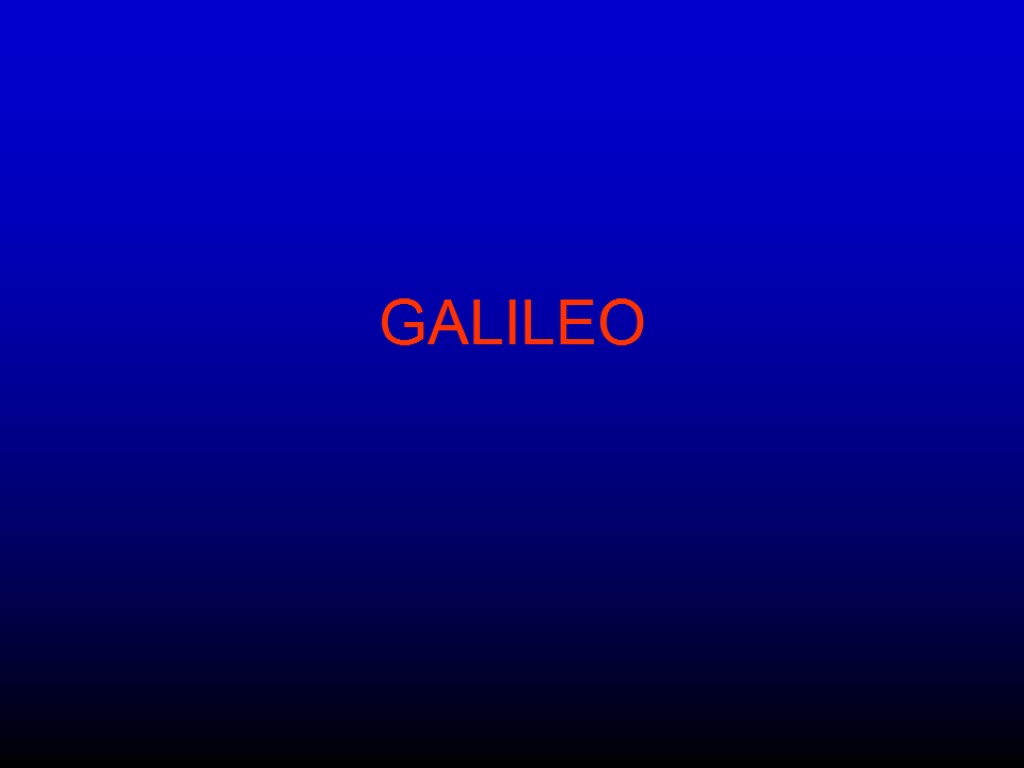



![GALILEO Signals and Spectra ≈ ≈ ≈ f [MHz] ARNS 960 MHz 1214 MHz GALILEO Signals and Spectra ≈ ≈ ≈ f [MHz] ARNS 960 MHz 1214 MHz](https://present5.com/customparser/62691037_415872765 --- zadar_elmar_2004_presentation_vejrazka.ppt/slide_31.jpg)
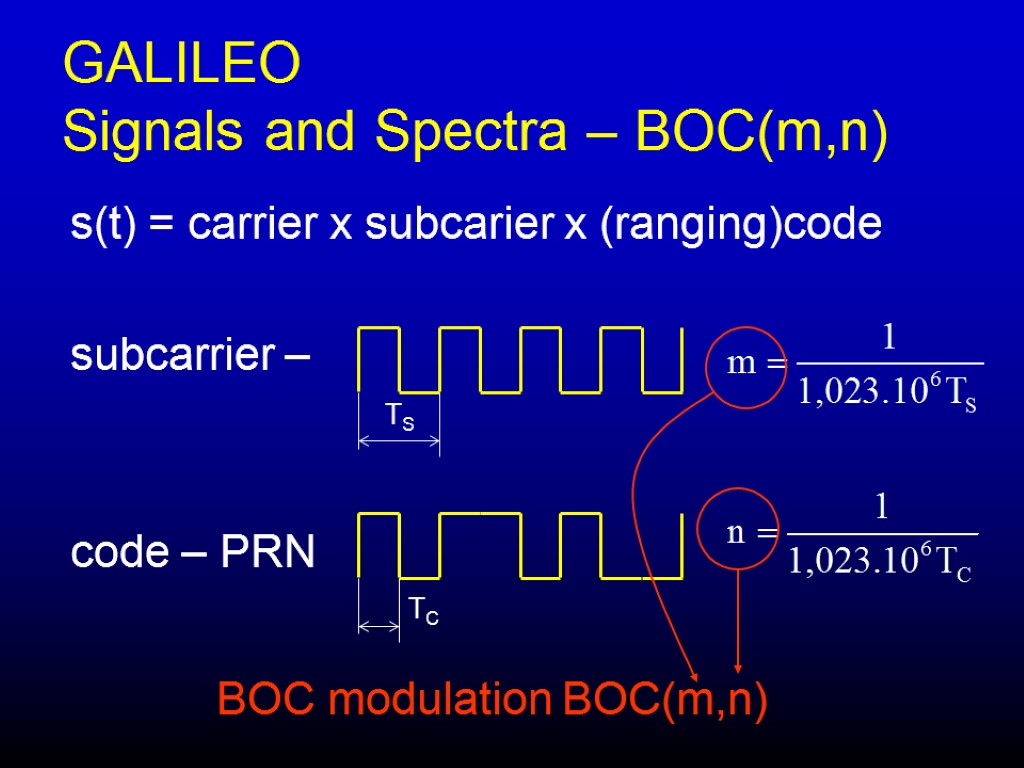
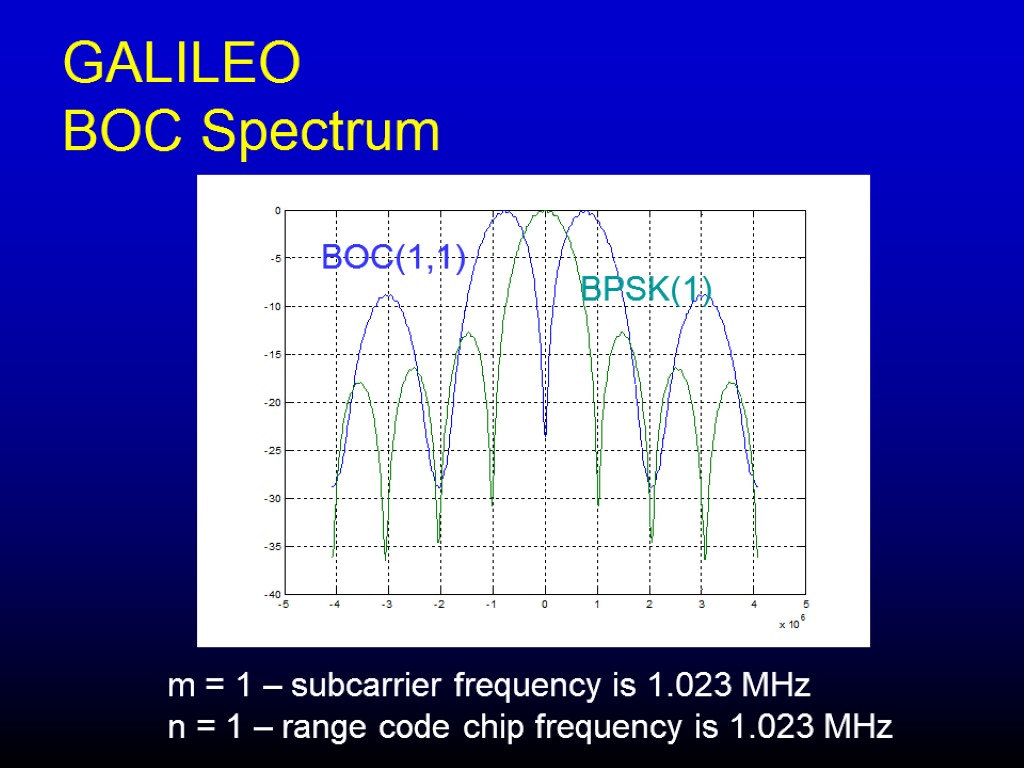




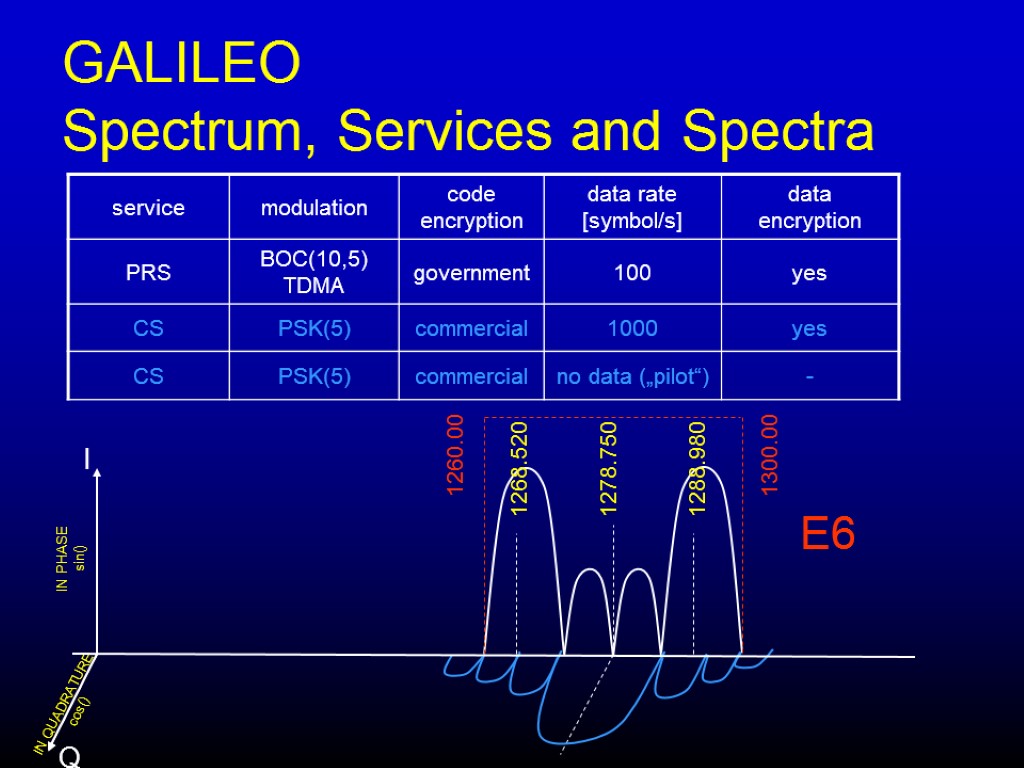
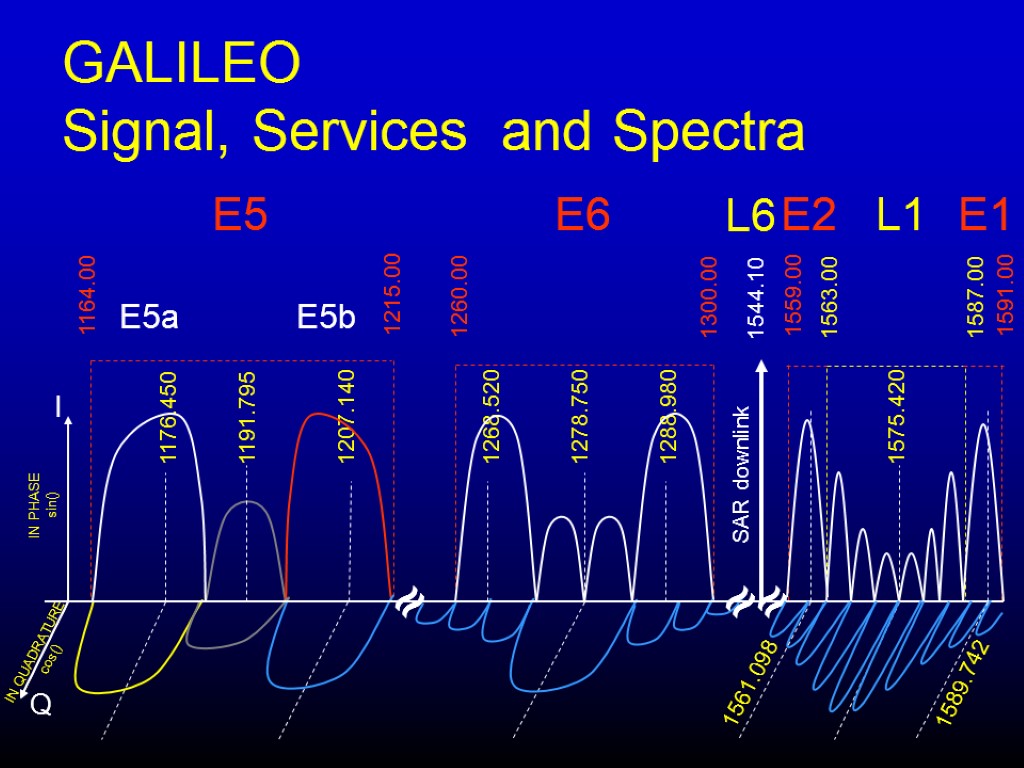









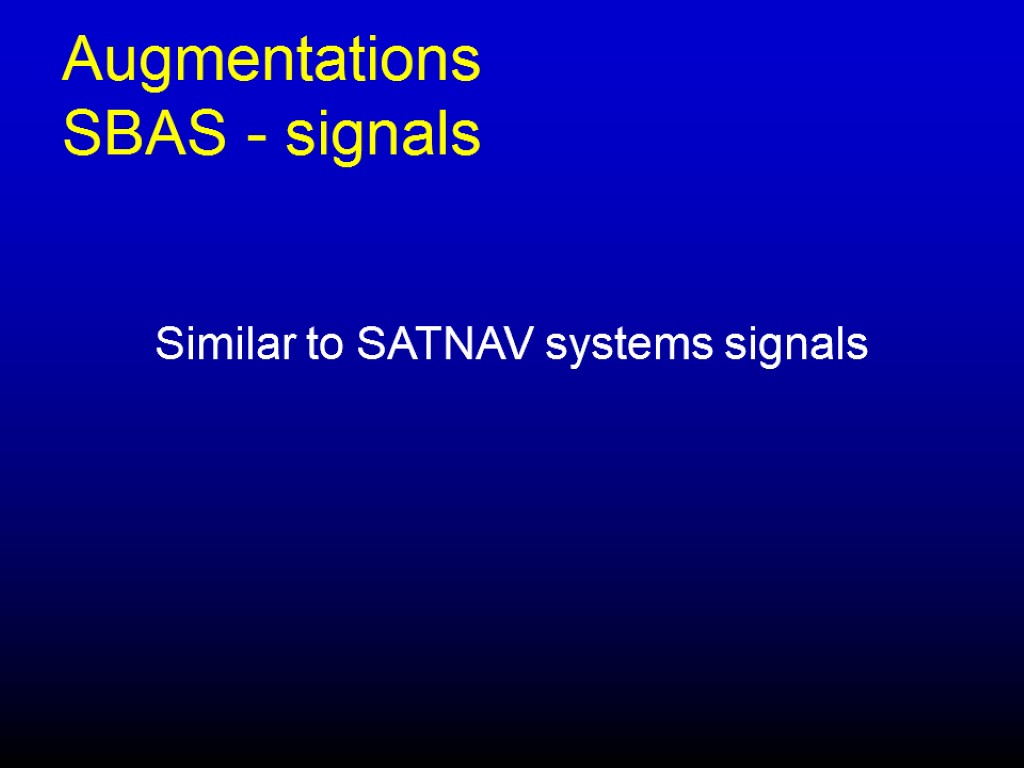




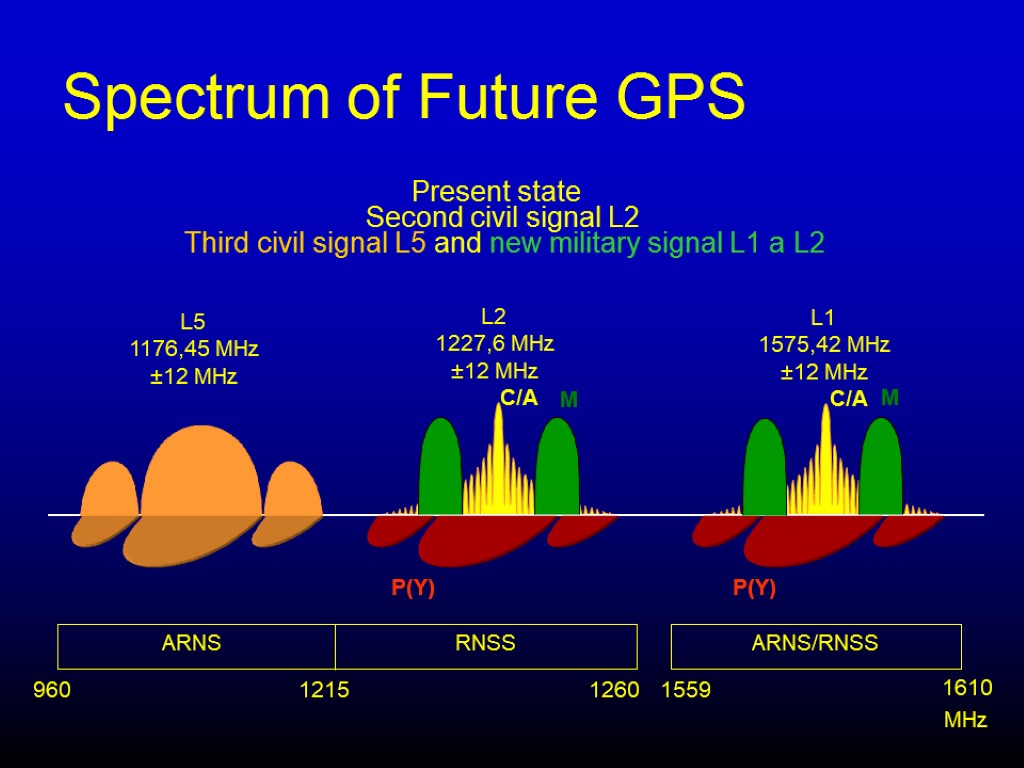

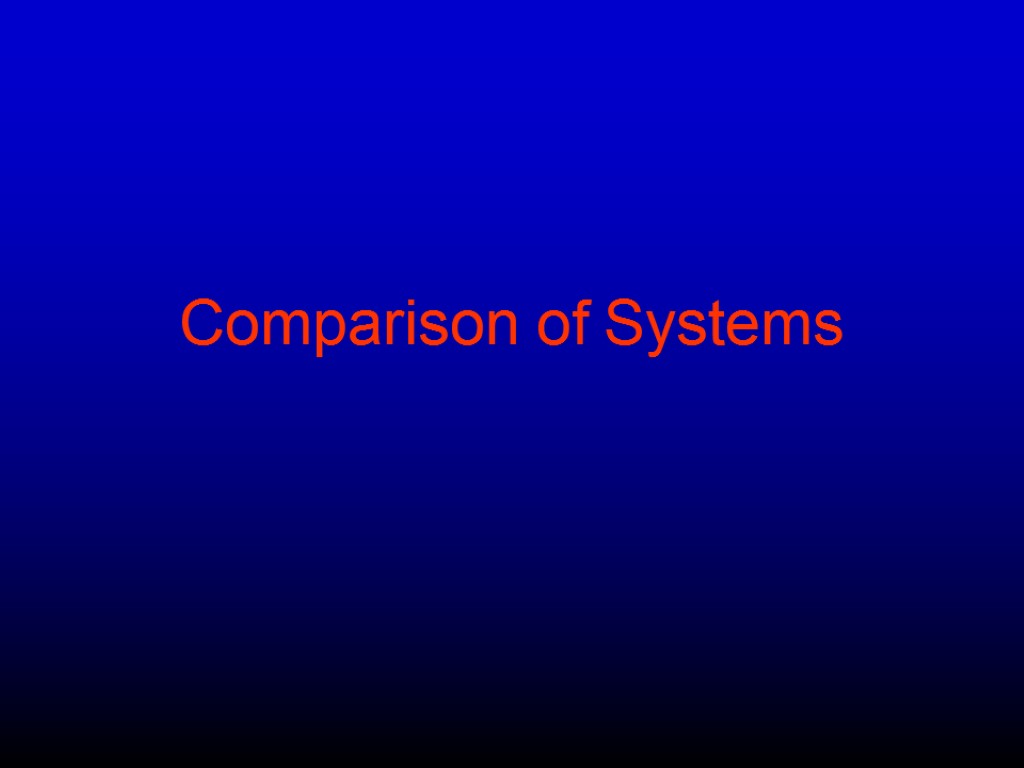



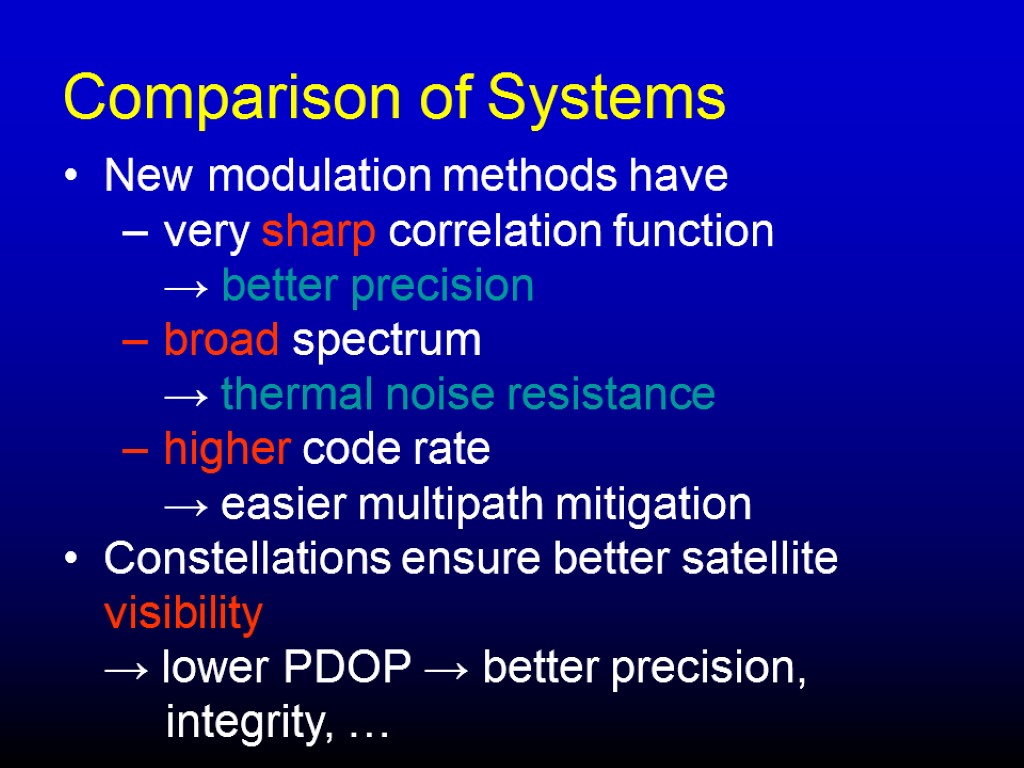







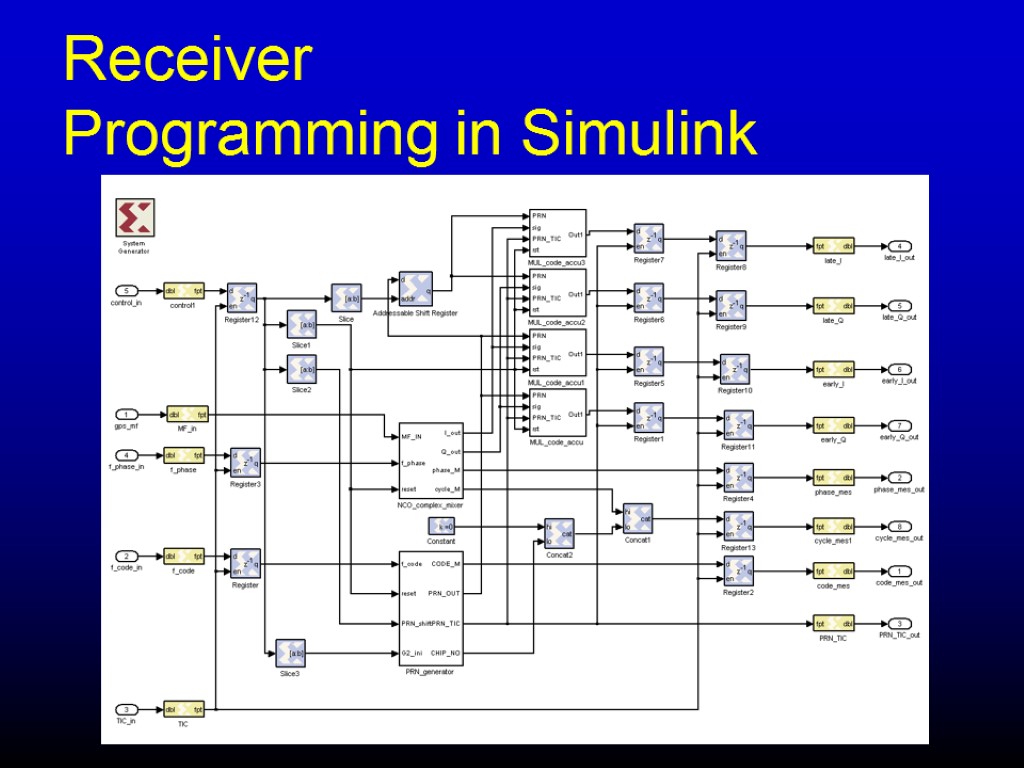





zadar_elmar_2004_presentation_vejrazka.ppt
- Количество слайдов: 73
 PRESENT SATELLITE RADIO NAVIGATION SYSTEMS, THEIR PERFORMANCE AND USER RECEIVER CONCEPTS František Vejražka, Pavel Kovář, Libor Seidl, Petr Kačmařík, Josef Špaček, Pavel Puričer Department of Radio Engineering Czech Technical University in Prague Czech Republic
PRESENT SATELLITE RADIO NAVIGATION SYSTEMS, THEIR PERFORMANCE AND USER RECEIVER CONCEPTS František Vejražka, Pavel Kovář, Libor Seidl, Petr Kačmařík, Josef Špaček, Pavel Puričer Department of Radio Engineering Czech Technical University in Prague Czech Republic
 Abstract This contribution gives an overview of present and future navigation systems and their augmentations such as GPS, GLONASS, GALILEO, WAAS, EGNOS, MSAT, QZSS, BEIDOU, GAGAN. Performance of the systems depends on their technical parameters. We will try to evaluate these and to present our opinion on their advantages for different applications and in various situations (reception of weak signals suffering from great attenuation under vegetation canopy, in urban canyons, influence of reflections and multipath). The last part of the contribution deals with an application of software radio technology for user receiver design and results obtained from experiments with different algorithms of processing the satellite navigation systems signals.
Abstract This contribution gives an overview of present and future navigation systems and their augmentations such as GPS, GLONASS, GALILEO, WAAS, EGNOS, MSAT, QZSS, BEIDOU, GAGAN. Performance of the systems depends on their technical parameters. We will try to evaluate these and to present our opinion on their advantages for different applications and in various situations (reception of weak signals suffering from great attenuation under vegetation canopy, in urban canyons, influence of reflections and multipath). The last part of the contribution deals with an application of software radio technology for user receiver design and results obtained from experiments with different algorithms of processing the satellite navigation systems signals.
 Terminology Satellite (Radio) Navigation Systems ~ Radio Determination Satellite Systems ~ Systems for radio position determination using satellites
Terminology Satellite (Radio) Navigation Systems ~ Radio Determination Satellite Systems ~ Systems for radio position determination using satellites
 Satellite Navigation Systems Historical Satellite Navigation Systems (not realized) 601 TIMATION ... GEOSTAR REXSTAR GPS - NAVSTAR
Satellite Navigation Systems Historical Satellite Navigation Systems (not realized) 601 TIMATION ... GEOSTAR REXSTAR GPS - NAVSTAR
 Satellite Navigation Systems Past Satellite Navigation Systems NNSS - Transit Tsikad GPS - NAVSTAR realized but cancelled
Satellite Navigation Systems Past Satellite Navigation Systems NNSS - Transit Tsikad GPS - NAVSTAR realized but cancelled
 full operational Satellite Navigation Systems GLONASS GPS - NAVSTAR GALILEO in the air, not fully operational, lack of reliable satellites projected, in development, operational from 2008
full operational Satellite Navigation Systems GLONASS GPS - NAVSTAR GALILEO in the air, not fully operational, lack of reliable satellites projected, in development, operational from 2008
 Satellite Navigation Systems GPS-NAVSTAR GLONASS GALILEO Global systems: Local systems: Augmentation systems: BEIDOU … WAAS NDGPS EGNOS MSAS GAGAN QZSS → GALILEO
Satellite Navigation Systems GPS-NAVSTAR GLONASS GALILEO Global systems: Local systems: Augmentation systems: BEIDOU … WAAS NDGPS EGNOS MSAS GAGAN QZSS → GALILEO
 Principles of Satellite Navigation Systems Doppler systems Ranging systems
Principles of Satellite Navigation Systems Doppler systems Ranging systems
![>Principles of Satellite Navigation Systems – Doppler Systems Ni = ΔFΔT+(f0/c){√[(xi+1-x)2+(yi+1-y)2+(zi+1-z)2 ] – √[(xi-x)2+(yi-y)2+(zi-z)2]} >Principles of Satellite Navigation Systems – Doppler Systems Ni = ΔFΔT+(f0/c){√[(xi+1-x)2+(yi+1-y)2+(zi+1-z)2 ] – √[(xi-x)2+(yi-y)2+(zi-z)2]}](https://present5.com/customparser/62691037_415872765 --- zadar_elmar_2004_presentation_vejrazka.ppt/slide_9.jpg) Principles of Satellite Navigation Systems – Doppler Systems Ni = ΔFΔT+(f0/c){√[(xi+1-x)2+(yi+1-y)2+(zi+1-z)2 ] – √[(xi-x)2+(yi-y)2+(zi-z)2]} i = 1, 2, 3
Principles of Satellite Navigation Systems – Doppler Systems Ni = ΔFΔT+(f0/c){√[(xi+1-x)2+(yi+1-y)2+(zi+1-z)2 ] – √[(xi-x)2+(yi-y)2+(zi-z)2]} i = 1, 2, 3
 Principles of Satellite Navigation Systems – Ranging Systems (xi - x)2 + (yi - y)2 + (zi - z)2 = (c (mi - 0) )2 i = 1, 2, 3, 4 (xi - x)2 + (yi - y)2 + (zi - z)2 = (c i)2 i = 1, 2, 3
Principles of Satellite Navigation Systems – Ranging Systems (xi - x)2 + (yi - y)2 + (zi - z)2 = (c (mi - 0) )2 i = 1, 2, 3, 4 (xi - x)2 + (yi - y)2 + (zi - z)2 = (c i)2 i = 1, 2, 3
 +1 -1 t received C(t+) code C(t) range code inside receiver
+1 -1 t received C(t+) code C(t) range code inside receiver
 GPS DELAY DISCRIMINATOR correlator C() generátor delay clock delay control C(t+)
GPS DELAY DISCRIMINATOR correlator C() generátor delay clock delay control C(t+)
 GPS EARLY-LATE DISCRIMINATOR correlator C() generator clock m = R + correlator filter C(t - m) + - R
GPS EARLY-LATE DISCRIMINATOR correlator C() generator clock m = R + correlator filter C(t - m) + - R
![>Receiver Principle ()2 phase lock m pseudorange delay discriminator C(t)D(t)cos(2ft) [C(t)D(t)(1+cos(4ft))] cos(2ft) C2(t) = >Receiver Principle ()2 phase lock m pseudorange delay discriminator C(t)D(t)cos(2ft) [C(t)D(t)(1+cos(4ft))] cos(2ft) C2(t) =](https://present5.com/customparser/62691037_415872765 --- zadar_elmar_2004_presentation_vejrazka.ppt/slide_14.jpg) Receiver Principle ()2 phase lock m pseudorange delay discriminator C(t)D(t)cos(2ft) [C(t)D(t)(1+cos(4ft))] cos(2ft) C2(t) = 1 D2(t) = 1 C(t)D(t) C(t) C2(t)D(t) = D(t)
Receiver Principle ()2 phase lock m pseudorange delay discriminator C(t)D(t)cos(2ft) [C(t)D(t)(1+cos(4ft))] cos(2ft) C2(t) = 1 D2(t) = 1 C(t)D(t) C(t) C2(t)D(t) = D(t)
 Systems Parameters (Properties) We will deal with systems: GPS – NAVSTAR GLONASS GALILEO
Systems Parameters (Properties) We will deal with systems: GPS – NAVSTAR GLONASS GALILEO
 GPS - NAVSTAR
GPS - NAVSTAR
 GPS Constellation 0° 40° 80° 120° 160° 320° 280° 240° 200° 17° 77° 137° 197° 257° 317° satellite operational spare Equator Right ascension of ascending node Mean anomaly F E D B A Plane Inclination 55° Semimajor axis 26561.75 km (altitude above Earth 20183,6 km) Excentricity nominally e = 0, generally e < 0,02 C
GPS Constellation 0° 40° 80° 120° 160° 320° 280° 240° 200° 17° 77° 137° 197° 257° 317° satellite operational spare Equator Right ascension of ascending node Mean anomaly F E D B A Plane Inclination 55° Semimajor axis 26561.75 km (altitude above Earth 20183,6 km) Excentricity nominally e = 0, generally e < 0,02 C
 GPS Present Signal Structure (1/3) Signal in time domain: L1: s(t)=ACCC/A(t).D(t)cos(2πf1t)+APP(t).D(t)sin(2πf1t) L2: s(t)=APP(t).D(t)sin(2πf1t) Code multiplex - each satellite has own range codes CC/A(t) and P(t) Signal in frequency domain: L2 1227,6 MHz ±12 MHz L1 1575,42 MHz ±12 MHz ARNS/RNSS 1260 1559 1610 C/A MHz 1215 RNSS
GPS Present Signal Structure (1/3) Signal in time domain: L1: s(t)=ACCC/A(t).D(t)cos(2πf1t)+APP(t).D(t)sin(2πf1t) L2: s(t)=APP(t).D(t)sin(2πf1t) Code multiplex - each satellite has own range codes CC/A(t) and P(t) Signal in frequency domain: L2 1227,6 MHz ±12 MHz L1 1575,42 MHz ±12 MHz ARNS/RNSS 1260 1559 1610 C/A MHz 1215 RNSS
 GPS Parameters Signal Structure (2/3) Navigation Message (Data) Content: transmitting satellite Kepler parameters almanac – Kepler parameters of others satellites satellite „health“ corrections of satellite clock frequency troposphere refraction … Organisation of Data Frame: navigation message = 25 pages ~ 12,5 mins frame = 1500 bits ~ 30 s ~ 5 subframes 25 pages subframe=10 words ~ 6 s word = 30 bits ~ 0,6 s bit ~ 20 ms
GPS Parameters Signal Structure (2/3) Navigation Message (Data) Content: transmitting satellite Kepler parameters almanac – Kepler parameters of others satellites satellite „health“ corrections of satellite clock frequency troposphere refraction … Organisation of Data Frame: navigation message = 25 pages ~ 12,5 mins frame = 1500 bits ~ 30 s ~ 5 subframes 25 pages subframe=10 words ~ 6 s word = 30 bits ~ 0,6 s bit ~ 20 ms
 GPS Parameters Signal Structure (3/3) Navigation Message FEC Hamming Coding
GPS Parameters Signal Structure (3/3) Navigation Message FEC Hamming Coding
 GPS Services SPS – Standard Positioning Service only C/A code accessible PPS – Precision Positioning Service for authorized users P(Y) code accessible
GPS Services SPS – Standard Positioning Service only C/A code accessible PPS – Precision Positioning Service for authorized users P(Y) code accessible
 GLONASS
GLONASS
 GLONASS Constellation 24 satellites (8 satellites in each of 3 planes) e ~ 0 (circular orbit) inclination 64.8° altitude 19 100 km, orbit period 11h 15m angular spacing between orbits 120°
GLONASS Constellation 24 satellites (8 satellites in each of 3 planes) e ~ 0 (circular orbit) inclination 64.8° altitude 19 100 km, orbit period 11h 15m angular spacing between orbits 120°
 GLONASS Signal Structure Frequencies: L1: fj = 1602 + 9j/16 L2: fi = 1246 + 7i/16 [MHz] Modulation: Navigation message Pseudorandom ranging code Sequence of maximum length Period 1 msec Bit rate 511 kb/s 100 Hz auxiliary meander sequence – Manchester code
GLONASS Signal Structure Frequencies: L1: fj = 1602 + 9j/16 L2: fi = 1246 + 7i/16 [MHz] Modulation: Navigation message Pseudorandom ranging code Sequence of maximum length Period 1 msec Bit rate 511 kb/s 100 Hz auxiliary meander sequence – Manchester code
 GLONASS Signal Structure Data Hamming code (84,8) 50 b/s in strings 15 strings ~frame 5 frames ~navigation message ~2.5 min No Data Parity Time mark 2 sec 0 85 bits 111110…110 1.7 sec 0.3 sec
GLONASS Signal Structure Data Hamming code (84,8) 50 b/s in strings 15 strings ~frame 5 frames ~navigation message ~2.5 min No Data Parity Time mark 2 sec 0 85 bits 111110…110 1.7 sec 0.3 sec
 GLONASS Constellation history
GLONASS Constellation history
 GALILEO
GALILEO
 GALILEO Constellation 3 GEO satellites: Inmarsat III AOR-E 15.5°W F5 25.0°E ESA Artemis 21.5°E 30 MEO satellites: 9 satellites in each of 3 planes (Walker constellation 27/3/1) 3 spare satellites (1 in each plane) e = 0 (circular orbits) inclination 56° altitude 23 616 km orbit period 14h 21.6m ~ 1+2/3 rev. a day ~ ground track repeats every 3 days
GALILEO Constellation 3 GEO satellites: Inmarsat III AOR-E 15.5°W F5 25.0°E ESA Artemis 21.5°E 30 MEO satellites: 9 satellites in each of 3 planes (Walker constellation 27/3/1) 3 spare satellites (1 in each plane) e = 0 (circular orbits) inclination 56° altitude 23 616 km orbit period 14h 21.6m ~ 1+2/3 rev. a day ~ ground track repeats every 3 days
 GALILEO Architecture
GALILEO Architecture
 GALILEO Services OS – Open Service free of charge, positioning, navigation, timing services CS – Commercial Service added value to OS, garanteed services SoL – Safety of Life integrity message PRS – Public Regulated Service police, customs, ... dedicated signal, under governmental control SAR – Search and Rescue coordinated with COSPAS – SARSAT
GALILEO Services OS – Open Service free of charge, positioning, navigation, timing services CS – Commercial Service added value to OS, garanteed services SoL – Safety of Life integrity message PRS – Public Regulated Service police, customs, ... dedicated signal, under governmental control SAR – Search and Rescue coordinated with COSPAS – SARSAT
![>GALILEO Signals and Spectra ≈ ≈ ≈ f [MHz] ARNS 960 MHz 1214 MHz >GALILEO Signals and Spectra ≈ ≈ ≈ f [MHz] ARNS 960 MHz 1214 MHz](https://present5.com/customparser/62691037_415872765 --- zadar_elmar_2004_presentation_vejrazka.ppt/slide_31.jpg) GALILEO Signals and Spectra ≈ ≈ ≈ f [MHz] ARNS 960 MHz 1214 MHz 1151 MHz 1300 MHz RNSS 1559 MHz 5250 MHz 1559 MHz 5030 MHz RNSS ARNS ARNS – Aeronautical Radio Navigation Service RNSS – Radion Navigation Satellite Service
GALILEO Signals and Spectra ≈ ≈ ≈ f [MHz] ARNS 960 MHz 1214 MHz 1151 MHz 1300 MHz RNSS 1559 MHz 5250 MHz 1559 MHz 5030 MHz RNSS ARNS ARNS – Aeronautical Radio Navigation Service RNSS – Radion Navigation Satellite Service
 GALILEO Signals and Spectra – BOC(m,n) s(t) = carrier x subcarier x (ranging)code subcarrier – code – PRN TS TC BOC modulation BOC(m,n)
GALILEO Signals and Spectra – BOC(m,n) s(t) = carrier x subcarier x (ranging)code subcarrier – code – PRN TS TC BOC modulation BOC(m,n)
 GALILEO BOC Spectrum m = 1 – subcarrier frequency is 1.023 MHz n = 1 – range code chip frequency is 1.023 MHz
GALILEO BOC Spectrum m = 1 – subcarrier frequency is 1.023 MHz n = 1 – range code chip frequency is 1.023 MHz
 GALILEO BOC Correlation Function BOC(1,1) m = 1 – subcarrier frequency is 1.023 MHz n = 1 – range code chip frequency is 1.023 MHz
GALILEO BOC Correlation Function BOC(1,1) m = 1 – subcarrier frequency is 1.023 MHz n = 1 – range code chip frequency is 1.023 MHz
 GALILEO BOC modulation BOC(1,1) BOC(5,1) BOC(5,2) correlation function spectrum
GALILEO BOC modulation BOC(1,1) BOC(5,1) BOC(5,2) correlation function spectrum
 GALILEO Signals, Services and Spectra 1575.420 1561.098 1589.742 1559.00 1591.00 L1 1563.00 1587.00 E2 E1 SoL uses the same signals as OS with integrity message
GALILEO Signals, Services and Spectra 1575.420 1561.098 1589.742 1559.00 1591.00 L1 1563.00 1587.00 E2 E1 SoL uses the same signals as OS with integrity message
 GALILEO Signals, Services and Spectra 1176.450 1207.140 1191.795 E5a E5b Differerent signals are broadcast on I and Q channels in upper (E5b) and lower (E5a) part of the band E5a and E5b may be used as a single ultra wide channel
GALILEO Signals, Services and Spectra 1176.450 1207.140 1191.795 E5a E5b Differerent signals are broadcast on I and Q channels in upper (E5b) and lower (E5a) part of the band E5a and E5b may be used as a single ultra wide channel
 GALILEO Spectrum, Services and Spectra
GALILEO Spectrum, Services and Spectra
 GALILEO Signal, Services and Spectra I Q 1176.450 1207.140 1278.750 1575.420 1544.10 1191.795 1268.520 1288.980 IN PHASE sin() IN QUADRATURE cos() 1561.098 1589.742 1559.00 1591.00 E5 E6 L1 1563.00 1587.00 E2 E1 E5a E5b SAR downlink L6
GALILEO Signal, Services and Spectra I Q 1176.450 1207.140 1278.750 1575.420 1544.10 1191.795 1268.520 1288.980 IN PHASE sin() IN QUADRATURE cos() 1561.098 1589.742 1559.00 1591.00 E5 E6 L1 1563.00 1587.00 E2 E1 E5a E5b SAR downlink L6
 GALILEO Service Parameters
GALILEO Service Parameters
 BEIDOU
BEIDOU
 BEIDOU „China‘s „Beidou“ navigation system is a regional positioning system mainly covering the country and its neighbouring areas, thus making vertical positioning impossible and limiting the number of users.“ 3 geostationary satellites circular orbits
BEIDOU „China‘s „Beidou“ navigation system is a regional positioning system mainly covering the country and its neighbouring areas, thus making vertical positioning impossible and limiting the number of users.“ 3 geostationary satellites circular orbits
 BEIDOU Constellation (Beidou 1B orbit)
BEIDOU Constellation (Beidou 1B orbit)
 Augmentations
Augmentations
 corrections known coordinates receiver receiver Augmentation Differential GPS (DGPS)
corrections known coordinates receiver receiver Augmentation Differential GPS (DGPS)
 transmitter reference station corrections known coordinates Augmentation Differential GPS (DGPS)
transmitter reference station corrections known coordinates Augmentation Differential GPS (DGPS)
 Augmentations Many systems NDGPS maritime systems Systems with satellite channel for corrections transmission WADGPS SBAS (ICAO) – Satellite Based Augmentation Systems WAAS MSAS EGNOS → future part of GALILEO …
Augmentations Many systems NDGPS maritime systems Systems with satellite channel for corrections transmission WADGPS SBAS (ICAO) – Satellite Based Augmentation Systems WAAS MSAS EGNOS → future part of GALILEO …
 Augmentations SBAS - Constellation ARTEMIS GPS MTSAT INMARSAT INMARSAT EGNOS MSAS WAAS GAGAN
Augmentations SBAS - Constellation ARTEMIS GPS MTSAT INMARSAT INMARSAT EGNOS MSAS WAAS GAGAN
 Augmentations SBAS - signals Similar to SATNAV systems signals
Augmentations SBAS - signals Similar to SATNAV systems signals
 Augmentation QZSS
Augmentation QZSS
 Augmentation QZSS - Constellation (1) Inclined orbital plane at approximately 45 deg from GSO Ground track draws a figure “8” centered on the equator (2) 3 satellites on the 3 orbit planes operate so that the right ascension of the nodes are each 120 degrees apart Every 8 hours each of the 3 satellites passes over the same point on the figure “8” ground track
Augmentation QZSS - Constellation (1) Inclined orbital plane at approximately 45 deg from GSO Ground track draws a figure “8” centered on the equator (2) 3 satellites on the 3 orbit planes operate so that the right ascension of the nodes are each 120 degrees apart Every 8 hours each of the 3 satellites passes over the same point on the figure “8” ground track
 Augmentation QZSS Satellite visibility ensured with high elevation angle of more than 70 degrees. The urban canyon picture (Shinjuku area) Planed for 2010
Augmentation QZSS Satellite visibility ensured with high elevation angle of more than 70 degrees. The urban canyon picture (Shinjuku area) Planed for 2010
 MODERNISATION GPS
MODERNISATION GPS
 Spectrum of Future GPS Present state Second civil signal L2 L2 1227,6 MHz ±12 MHz L1 1575,42 MHz ±12 MHz L5 1176,45 MHz ±12 MHz Third civil signal L5 and new military signal L1 a L2 MHz
Spectrum of Future GPS Present state Second civil signal L2 L2 1227,6 MHz ±12 MHz L1 1575,42 MHz ±12 MHz L5 1176,45 MHz ±12 MHz Third civil signal L5 and new military signal L1 a L2 MHz
 IIF
IIF
 Comparison of Systems
Comparison of Systems
 Comparison of Systems What is an advantage of modernized or new systems ??? Systems use two or three frequencies → suppression of ionosphere refraction New modulation methods have very sharp correlation function → better precision broad spectrum → thermal noise resistance
Comparison of Systems What is an advantage of modernized or new systems ??? Systems use two or three frequencies → suppression of ionosphere refraction New modulation methods have very sharp correlation function → better precision broad spectrum → thermal noise resistance
 Comparison of Systems New modulation methods have very sharp correlation function → better precision broad spectrum → thermal noise resistance higher code rate → easier multipath mitigation
Comparison of Systems New modulation methods have very sharp correlation function → better precision broad spectrum → thermal noise resistance higher code rate → easier multipath mitigation
 Comparison of Systems Multipath Mitigation BPSK(5) BPSK(10) BOC(10,5) BOC(15,10)
Comparison of Systems Multipath Mitigation BPSK(5) BPSK(10) BOC(10,5) BOC(15,10)
 Comparison of Systems New modulation methods have very sharp correlation function → better precision broad spectrum → thermal noise resistance higher code rate → easier multipath mitigation Constellations ensure better satellite visibility → lower PDOP → better precision, integrity, …
Comparison of Systems New modulation methods have very sharp correlation function → better precision broad spectrum → thermal noise resistance higher code rate → easier multipath mitigation Constellations ensure better satellite visibility → lower PDOP → better precision, integrity, …
 RECEIVER ARCHITECTURE Requirements Processing of all known and planned SATNAV signals: GPS L1, L2, L5 GLONASS GALILEO Augmentations EGNOS WAAS Flexible design and development of powerful algorithms of signal processing Easy implementation of them Rapid and simple prototyping and testing Software Defined Radio
RECEIVER ARCHITECTURE Requirements Processing of all known and planned SATNAV signals: GPS L1, L2, L5 GLONASS GALILEO Augmentations EGNOS WAAS Flexible design and development of powerful algorithms of signal processing Easy implementation of them Rapid and simple prototyping and testing Software Defined Radio
 RECEIVER ARCHITECTURE Requirements Software Defined Radio What processor to use ??? DSP FPGA
RECEIVER ARCHITECTURE Requirements Software Defined Radio What processor to use ??? DSP FPGA
 RECEIVER ARCHITECTURE DSP Concept Loops in algorithms – lower computational power
RECEIVER ARCHITECTURE DSP Concept Loops in algorithms – lower computational power
 RECEIVER ARCHITECTURE FPGA Concept No loops in algorithms parallel processing → higher computational power
RECEIVER ARCHITECTURE FPGA Concept No loops in algorithms parallel processing → higher computational power
 RESULTS at CZECH TECHNICAL UNIVERSITY Experimental receiver
RESULTS at CZECH TECHNICAL UNIVERSITY Experimental receiver
 Experimental Receiver CTU (first version) Two-channel RF unit DSP unit – Virtex II FPGA PCI card PC Workstation – Windows 2000
Experimental Receiver CTU (first version) Two-channel RF unit DSP unit – Virtex II FPGA PCI card PC Workstation – Windows 2000
 High Frequency Part of the Receiver
High Frequency Part of the Receiver
 Receiver Programming in Simulink
Receiver Programming in Simulink
 Processor Programming in EDK
Processor Programming in EDK

 Conclusions Software Radio is prospective technology for multi-systems GNSS receivers, as well as FPGA technology This technology make possible design of receivers for hard receptions conditions (leaves canopy, urban environment, etc.)
Conclusions Software Radio is prospective technology for multi-systems GNSS receivers, as well as FPGA technology This technology make possible design of receivers for hard receptions conditions (leaves canopy, urban environment, etc.)
 Thank you for your attention. Pavel Kovář & František Vejražka & Libor Seidl Czech Technical University Prague, the Czech Republic http://radio.feld.cvut.cz/personal/vejrazka
Thank you for your attention. Pavel Kovář & František Vejražka & Libor Seidl Czech Technical University Prague, the Czech Republic http://radio.feld.cvut.cz/personal/vejrazka


